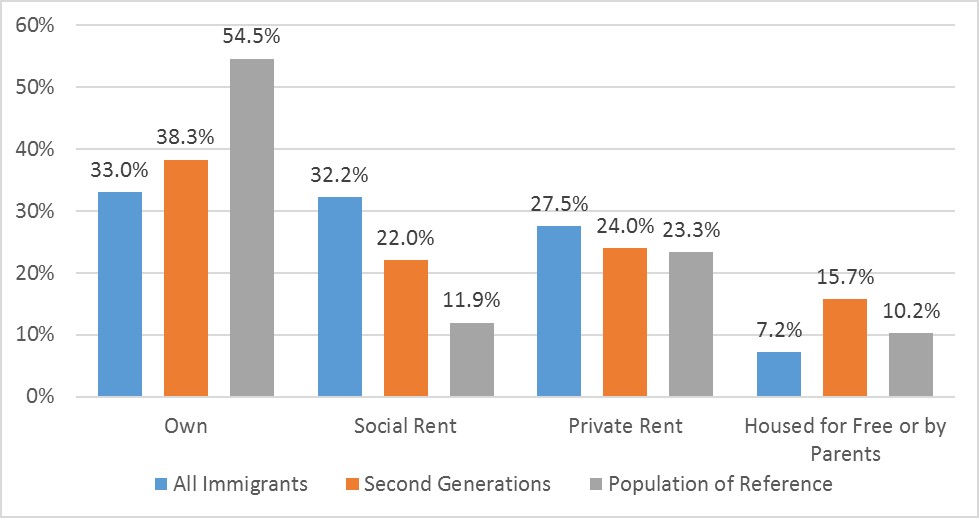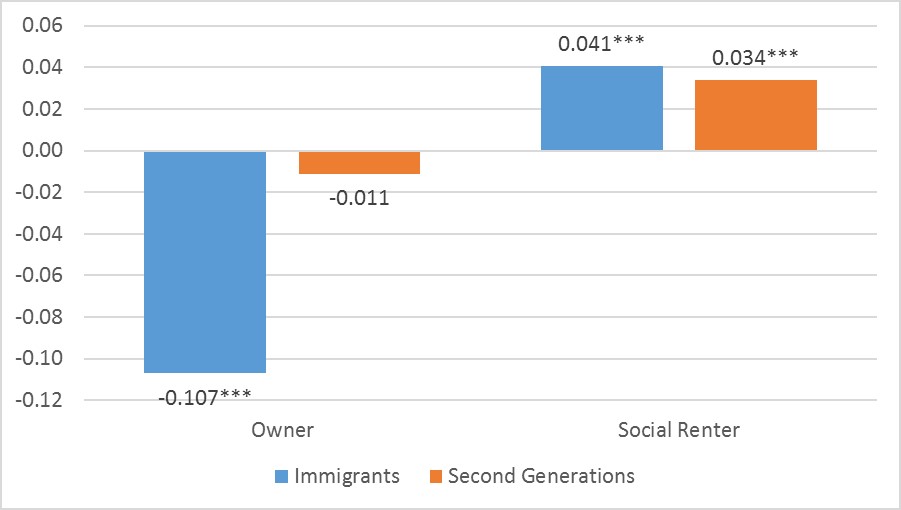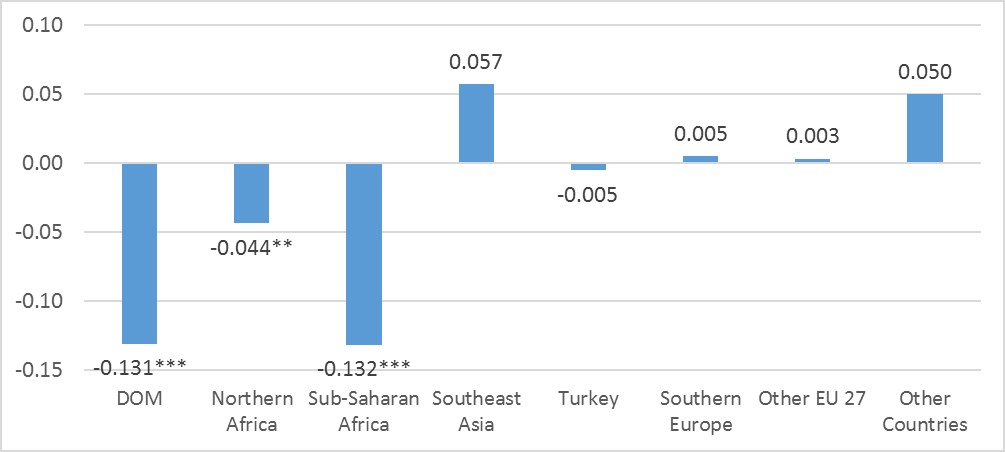Housing Tenure of Immigrants and Children of Immigrants in France
Blog by Arthur Acolin
- Created
- 14 Sep 2018, 9:51 a.m.
- Author
- Arthur Acolin
- DOI
- 10.1177/0042098018782656
Abstract: http://journals.sagepub.com/doi/full/10.1177/0042098018782656#abstract
France, like many European countries, is embroiled in debates about immigration and French society’s capacity to integrate newcomers over time. If immigrants assimilate, their outcomes will approach those of native-born residents the longer they stay in their new country. The outcomes of their children are expected to be largely indistinguishable from that of the rest of the population. In a recent paper [link to article], I analyze differences in housing tenure among three mutually exclusive groups: immigrants, children of immigrants, and the rest of the population (population of reference). The findings are consistent with overall integration with some groups experiencing persistently worse outcomes across generations.
Immigrants and second generations (children of immigrants) have different tenures than the population of reference (Figure 1). They are substantially less likely to own their home, and are substantially more likely to be living in social housing.
Figure 1: Tenure outcomes of immigrants, second generations and the population of reference

Note: Share of individuals in each form of tenure. Weighted estimation using weights provided by TeO. Source: TeO.
Tenure choice reflects socio-demographic characteristics such as age, household structure, and income. Some of the difference in homeownership between immigrants and native born reflects differences in these underlying characteristics. After controlling for socioeconomic characteristics, immigrants are still substantially less like than native born to be homeowners (Figure 2). In contrast, second generations are not statistically less likely to be homeowners than the rest of the population after controlling for other characteristics. Difference in the likelihood to live in social housing also declines across generations. These results suggest that subsequent generations integrate in the French housing market over time.
Figure 2: Residual differences in tenure for immigrants and second generation relative to the population of reference

Note: marginal effects from separate probit regressions comparing the likelihood of an individual being in one type of tenure relative to all other tenures controlling for compositional differences. Weighted estimation using weights provided by TeO; *p < 0.1; **p < 0.05; *** p < 0.01. Source: TeO.
However, children of immigrants from some non-European origins (Northern and Sub-Saharan Africa) and French Oversea Territories (DOM) continue to have substantially lower homeownership rates (Figure 3). When controlling for the reported experience of discrimination by survey respondents, these differences decrease. This suggests that some of that residual gap may be due to direct and indirect discrimination although other factors such as differences in parental resources may also play a role.
Figure 3: Residual differences in homeownership for children of immigrants relative to the population of reference by region of origin

Note: marginal effects from a probit regression comparing the likelihood of an individual being an owner relative to all other tenures controlling for compositional differences. Weighted estimation using weights provided by TeO; *p < 0.1; **p < 0.05; *** p < 0.01. Source: TeO.
In sum, immigrants and children integrate into French housing markets across generations, approaching homeownership rates similar to native born. Second generation experience smaller gaps in homeownership than immigrants. At the same time second generations from certain countries continue to experience larger homeownership gaps. Closing these gaps may require new policy interventions that recognize the continued challenges faced by immigrants from some origins and their children.
Read the paper on Urban Studies - Online First here


Comments
You need to be logged in to make a comment. Please Login or Register
There are no comments on this resource.